More than a quarter of a century later, Yezdi Motorcycles has kick-started its motors again, with three brand new offerings in India. Do they live up to the expectations?
Yezdi is back with a bang! Well, not just a single bang but three back-to-back bangs. Yes, that’s right, in January 2022, Mahindra’s Classic Legends announced the official comeback of the iconic Yezdi brand in the Indian market by launching not one but three new motorcycles – the Roadster, Scrambler, and Adventure. All three share the same powertrain, but, as you might already know, they cater to different styles of riding.
Now, given the weight of a legendary nameplate like Yezdi, there is no doubt that a lot is riding on the trio’s shoulders. Are they really worth the hype though? We got to test all three motorcycles over a course of the day to find out the answer. Of course, we didn’t get to spend enough time to come to a definitive conclusion after just a day of riding, but we think we’re now armed to answer most of your queries, if not all, about these bikes. So, without much ado, let’s find out what these Yezdi bikes bring to the table.
In this article, we’ll strictly stick to the ride experience of the new Yezdi motorcycles. You can, however, read everything about the technical details of the Roadster, Scrambler, and Adventure by clicking the following link: Yezdi launches three new motorcycles, prices start at Rs 1.98 lakh
Yezdi Scrambler: The Cool Kid
The first Yezdi that I tested was the Scrambler. Of the three bikes, I believe the Scrambler is, aesthetically, the most interesting. Also, it’s the most affordable Scrambler in the country, meaning it’s one of a kind. First things first, the Scrambler is compact – it has the shortest wheelbase (1,403mm) amongst the trio – but it’s not a small motorcycle. In fact, it looks nearly as big as something like a Ducati Scrambler. The design is also clearly inspired by bigger and more expensive motorcycles from the same category. Chopped-off front and rear fenders, a round LED headlamp covered in mesh protection, single-piece ribbed seat, spoke rims, upswept exhaust, chunky hand-guards, funky colour schemes, a wide handlebar, and long-travel suspension – everything points out that it’s meant to scramble. Even the paint schemes are similar to the ones offered with Ducati and Triumph motorcycles. That said, the quality levels aren’t the best in the segment, and there’s room for improvement – exposed wiring, flimsy plastics, and weld points stick out like a sore thumb.
Hop on to the Scrambler, and it feels quite natural. You sit upright with a slightly rear-set peg positioning, and the wide handlebar gives decent leverage. It’s a heavy motorcycle (182kgs), albeit, with a seat height of 800mm, it’s not intimidating at all.
Powering all three motorcycles is the same liquid-cooled 334cc single-cylinder engine. However, it’s been tuned differently for each version. In the Scrambler, it develops 28.7bhp at 8,000rpm and 28.2Nm at 6,750rpm. Power transmission duties are carried out by a six-speed gearbox, with a slip-and-assist clutch.
The numbers are respectable, no doubt. But then, the performance isn’t mind-blowing or exciting. This is a very peaky motor, and below 3,000rpm, there’s not a lot going for it. Between mid- and top-end, there’s a solid surge but nothing groundbreaking. The power delivery is linear and effortless, but you have to keep the motor spinning over 4,000rpm to get the best out of it. NVH levels are well-controlled, albeit post 6,000rpm, you can feel the buzz through the tank, pegs, and handlebar.
On open roads, you wouldn’t mind the engine’s high-revving character, but it’s a major pain when you ride it off-road or up a steep incline. It just doesn’t have enough poke, which forces you to slip the clutch excessively to keep the momentum.
What about handling? On rough roads and rocky trails, the Scrambler’s front end is bouncy and there’s no feel or feedback. At low speeds, the suspension is jittery, and I didn’t enjoy it much during the ride. As the speed builds, it settles down though. But be prepared to be tossed around if you hit a boulder or rock. The Scrambler’s road-biased MRF tyres don’t offer much in terms of confidence or grip on loose surfaces either. Couple that with an over intrusive ABS, and you end up skidding and losing whatever little confidence you’ve in the bike. Sure, the ABS does have an off-road mode (which deactivates ABS on the rear wheel), but even then the Scrambler feels out of its depth on rough turf.
On the road, though, the Scrambler is surprisingly a great handler. It flows and changes direction quickly and feels neutral no matter what. The suspension is absorbent, but sharp bumps can be unsettling. Overall, I’d say the Scrambler is better suited for the tarmac than dirt – at least, with the stock tyres.
Yezdi Roadster: The Surprise Element
When I saw the Roadster in the flesh, it looked the most uninspiring of the trio. It’s a mixed bag in terms of design – there are unmistakable cues from Harley-Davidson, Jawa, and Royal Enfield. So, to my eyes, it doesn’t look original or unique. The quality and fit-and-finish levels aren’t the best either. However, in terms of size and dimensions, it’s big and imposing. At 1,440mm, its wheelbase is longer than the Scrambler. The LCD screen is similar to the one you have on the Scrambler, but it doesn’t have USB charging ports as standard – the Roadster is the only motorcycle where it’s sold as an accessory, for it’s standard on the other two.
The riding position is not typical of a cruiser either. The bars are wide, but the foot-pegs are positioned neutrally, meaning tall riders might find it to be cramped over long rides. Another thing that bothered me while riding the Roadster was its bar-end mirrors. They kept rubbing against my wrist/glove, which was quite annoying.
Coming to the ride experience, on duty here is the same 334cc engine, albeit it’s been tuned for better low-end performance. Compared to the Scrambler, this one develops 29.2bhp at a lower 7300rpm and 29Nm of torque at 6,500rpm. It’s paired to a six-speed transmission as well.
The engine, surprisingly, felt more eager in this state of tune. While low-end is still feeble, there’s relatively more poke at low rpm. Like the Scrambler, the Roadster’s engine also starts pulling harder after 3,000rpm and continues to pull cleanly until about 6,000rpm, which is when you can sense that it’s time for a gear shift as the motor runs out of steam. Overall, the powertrain is effortless when you’re out cruising. I’m curious to see how would it tackle low-speed everyday traffic, but I am certainly not expecting it to offer the kind of grunt that you get from Royal Enfield’s 350cc J motor.
In the handling department, the Roadster felt the most stable of the three motorcycles. The steering is lazy, no doubt, but it’s stable and neutral for the most part. The front shocks offer more feel and feedback than that of the Scrambler – both on and off-road. The ride quality is acceptable but can’t be called plush. Over broken roads, there’s excessive vertical movement at speeds over 70 – 80km/h. The saddle is well-padded and quite comfortable though. Brakes are adequate but devoid of any feel. On the road, the ABS, too, behaved predictably on the Roadster.
Yezdi Adventure: When the Going Gets Rough
The Yezdi Adventure is quite possibly going to be the most popular motorcycle in the range, for it’s an entry-level ADV that has its gun trained on the Royal Enfield Himalayan.
First things first, the Adventure does look like a Himalayan clone – short fenders, bare-bones design, round headlamp, small windscreen, heavy protection, and large 21-inch front and 19-inch rear spoke wheels – it’s everything that we’ve already seen in the Himalayan. That said, you can’t really blame Yezdi for being unimaginative. There are only so many ways to design a crude entry-level ADV. So, in the styling department, I find the Adventure quite appealing – it’s a classic case of form following function.
In comparison to its siblings, the Adventure gets more kit too – the LCD display is tilt-adjustable here, and you also get Bluetooth connectivity and turn-by-turn navigation. Unlike the other two bikes, this is the only Yezdi that gets a mono-shock at the rear. And then there are more off-road focused bits and bobs, such as meaty CEAT rubber, the longest wheelbase of the three (1,465mm), the best ground clearance (220mm), and the biggest fuel tank (15.5 litres as opposed to 12.5 litres of the other two). Also, it’s the heaviest of the lot at 188kgs. In case you haven’t realised, these facts and figures are also quite identical to the Himalayan's.
At 815mm of seat height, the Adventure makes it easy for you to get your way around. The riding position is similar to the Himalayan too – you sit upright, with pegs placed neutrally, and the handlebar is high and narrow. The seat is quite spacious, and the padding is comfortable.
Of the three Yezdi motorcycles, the Adventure is where the 334cc engine develops the highest horsepower and torque – 30bhp at 8,000rpm and 29.9Nm at 6,500rpm. A six-speed transmission does the job like on the other two.
Before venturing off-road, I decided to ride the Adventure extensively on the road. That’s because 90% of the owners of bikes such as this – no matter how adventurous they claim themselves to be – are going to ride their ADVs on the tarmac 90% of the time.
Right off the bat, you can sense the Adventure is an eager motorcycle – despite being a heavyweight ADV, it picks up pace effortlessly. Make no mistake, it’s not an outright thriller, but it definitely feels quick off the line. The engine revs freely, and like the other two Yezdis, it shows its true character between mid- and high-revs. The low-end is adequate, but not as strong as the Himalayan. Vibrations are kept in check below 5,000rpm but post that, you’ll get buzzing sensations through every part and panel you’re in contact with. The gearbox is smooth and works like a charm. Not to mention, it’s a six-speed gearbox – it’s got one more cog than the Himalayan, which means that at high speeds, it feels like it can cruise more effortlessly.
When it comes to tackling corners, the Adventure behaves in a predictable and neutral manner. It’s definitely not the sharpest tool in the shed, but regardless of its weight and off-road-focused geometry, it’s an able handler on the tarmac. With its long-wheelbase, 21-inch front wheel, and relatively softer suspension, turn-ins are slow and lazy; however, it tracks the corner without throwing any ugly surprises once it leans over. Just like its siblings, the ride can get jittery over bad and broken roads. And when you take it off-road, it gets even more unsettling. At low speeds, the bike bobs about excessively, especially while tackling rocks and boulders. There’s virtually no feedback from the front end either. What’s more, the engine’s peaky character again rears its ugly head here – there’s a clear lack of grunt at low revs, and carrying momentum on steep inclines is a bit of a bother. The taller gearing doesn’t help its case either. The engine can stall unexpectedly if you aren’t careful with your throttle inputs and clutch management. You really have to thrash the motor to get going. This gets particularly annoying when you come across an obstacle while climbing a steep slope at low speeds.
Once the speed builds up, the suspension is more pliant, and the ride settles down – in fact, you’ll enjoy and appreciate the balance of the Yezdi Adventure on fast trails. With its grippy Ceat tyres, it also feels more planted and confident on the rough stuff. The ABS here suffers from the same problem as that of the Scrambler, albeit it’s less pronounced because of the grippier off-road tyres.
Verdict
There’s no denying that all three motorcycles have solid underpinnings, and Yezdi has covered all the relevant bases in terms of positioning its products. That said, the execution could have been better, as there’s definitely a lot of room for improvement, especially in terms of overall quality, the engine’s tractability, and riding dynamics.
Make no mistake, I’m not saying that these Yezdi bikes are terribly flawed, but some minor refinements can work wonders for the brand.
- Yezdi Scrambler
- Yezdi Roadster
- Yezdi Adventure
Engine: 334cc / Single-Cylinder / Liquid-Cooled
Transmission: 6-Speed
Power: 28.7bhp @ 8,000rpm
Torque: 28.2Nm @ 6,750rpm
Price: ₹2.10 Lakh (Ex-Showroom)
Scrambler X-Factor: The coolest looking Yezdi of the lot, period.
| Pros • Handling | Cons • Not an off-roader |
Engine: 334cc / Single-Cylinder / Liquid-Cooled
Transmission: 6-Speed
Power: 29.2bhp @ 7,300rpm
Torque: 29Nm @ 6,500rpm
Price: ₹1.98 Lakh (Ex-Showroom)
X-Factor: The surprise package of the lot, as it feels the most balanced of the trio
| Pros • Ride Quality | Cons • Uninspiring design |
Engine: 334cc / Single-Cylinder / Liquid-cooled
Transmission: 6-Speed
Power: 29.8bhp @ 8,000rpm
Torque: 29.9Nm @ 6,500rpm
Price: ₹2.11 Lakh (Ex-Showroom)
Adventure X-Factor: Balanced dynamics, refined engine, and comfy ergonomics make the Adventure a decent ADV.
| Pros • Handling | Cons • Bouncy off-road |

Also read:



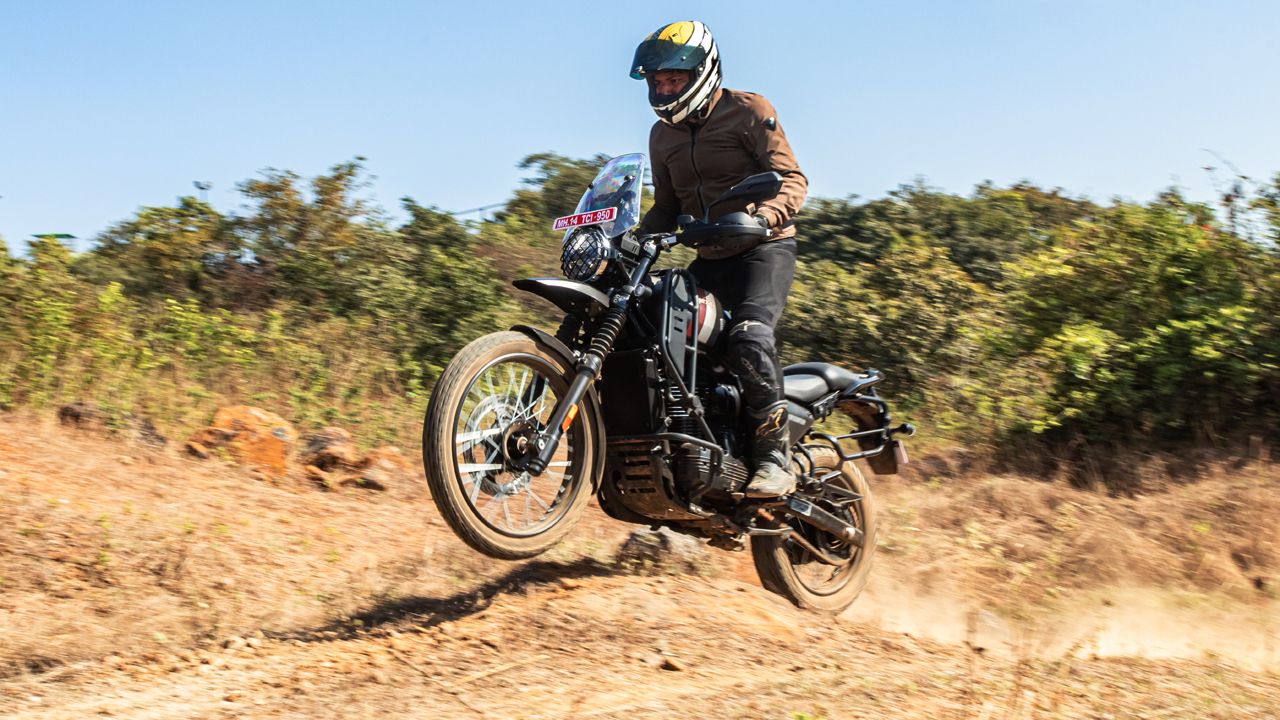

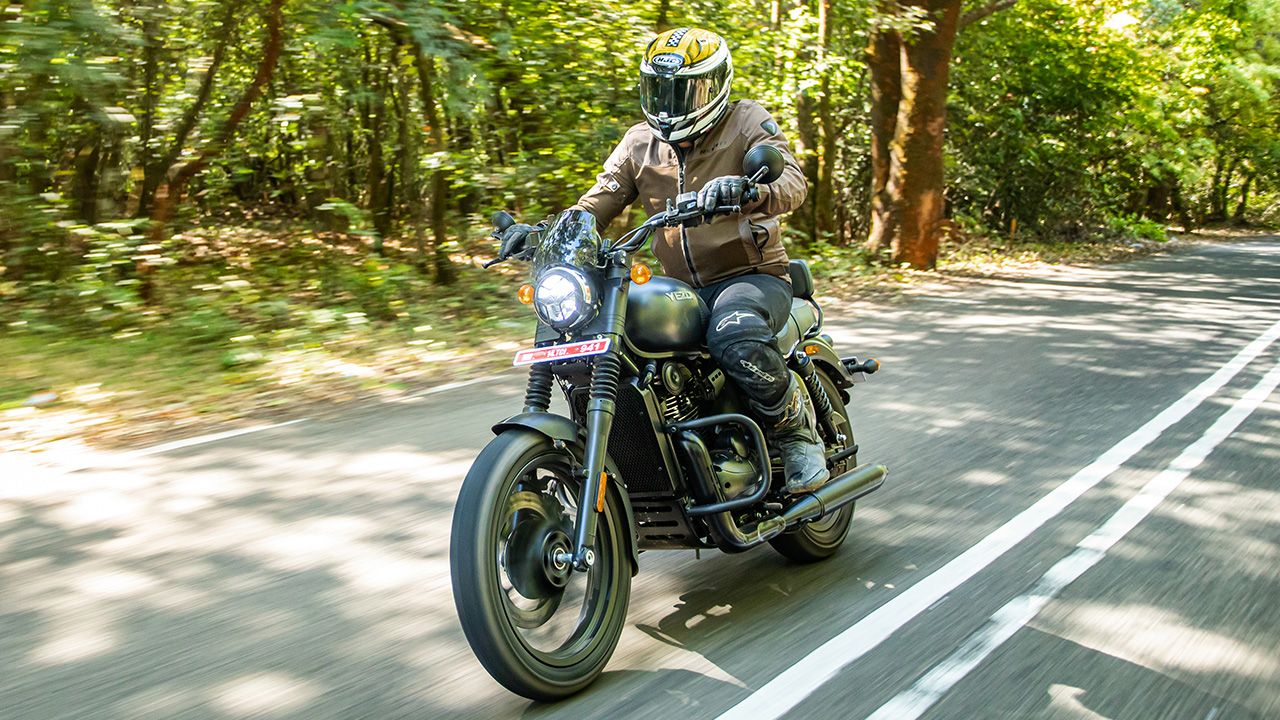
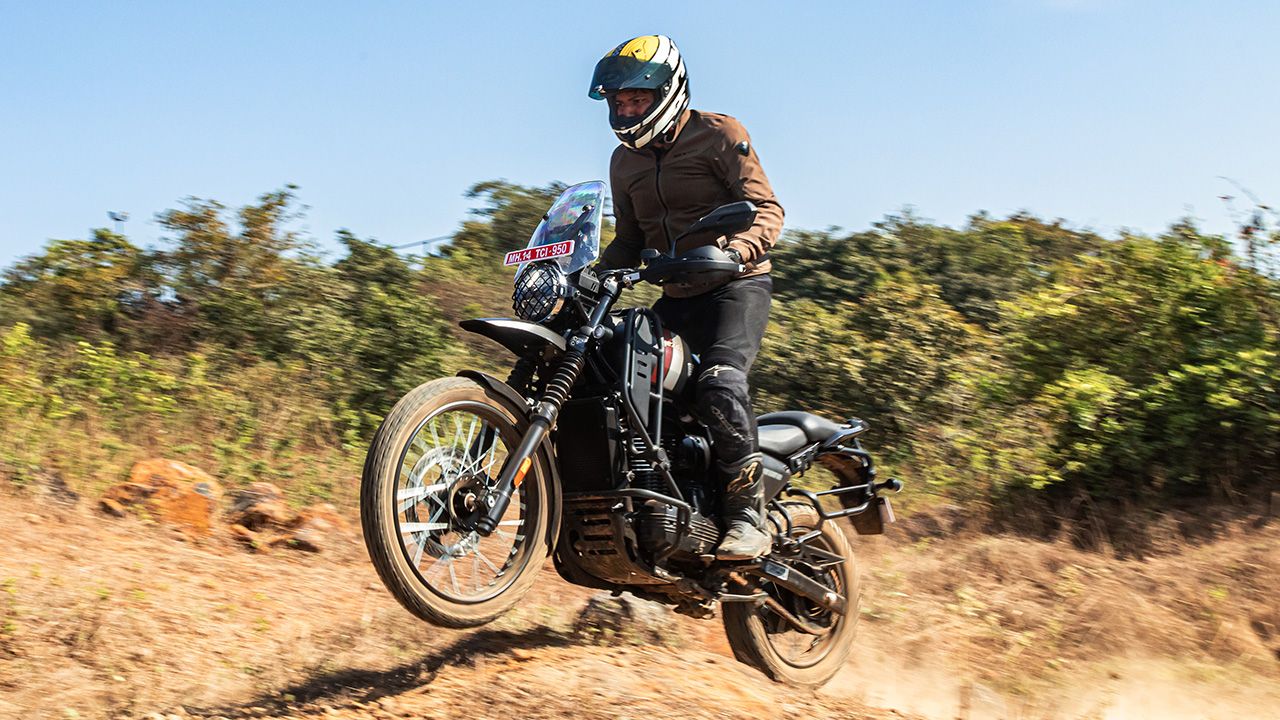
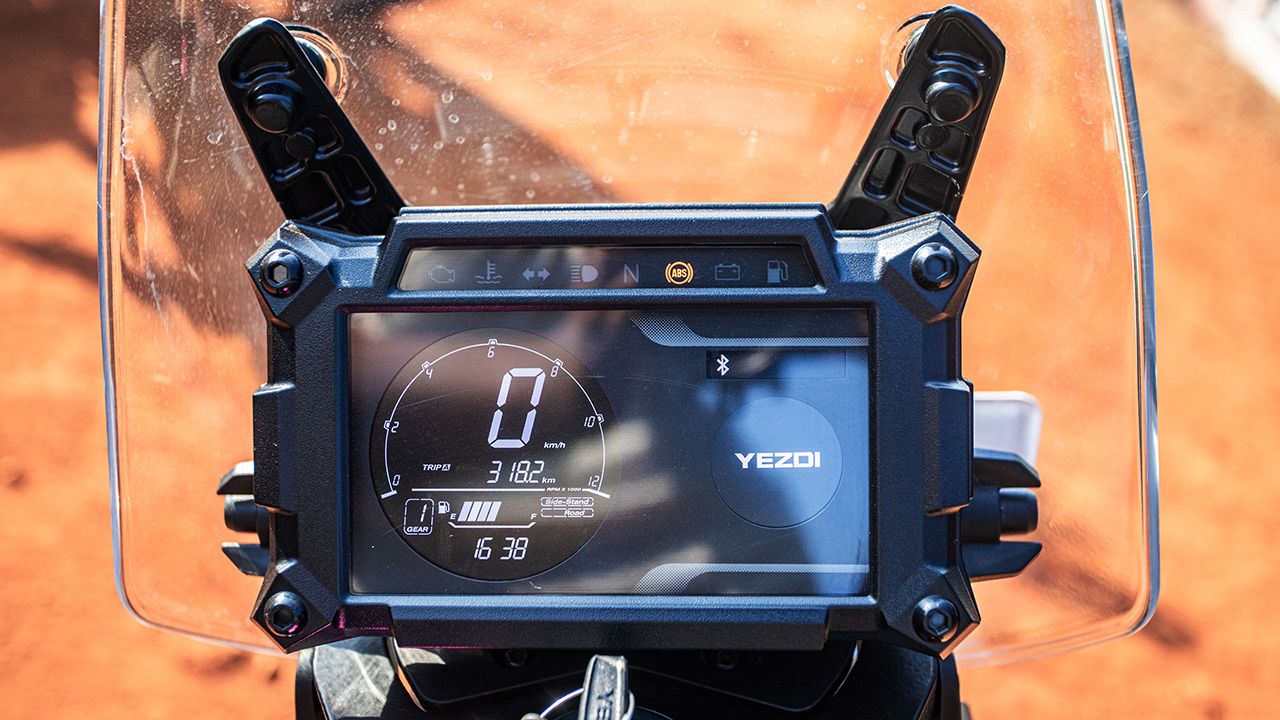



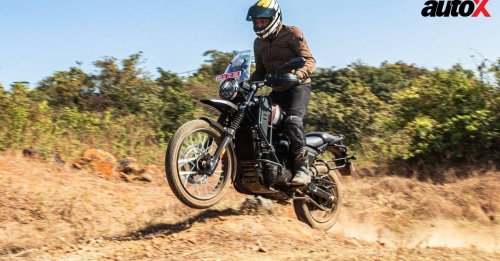
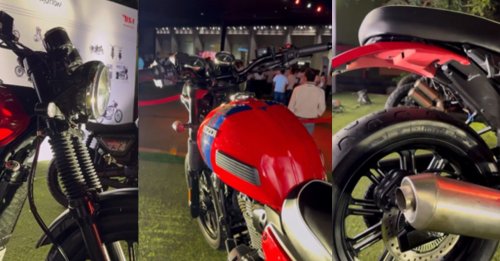
















Write your Comment